Home / ESG / Innovation Management
Innovative Measures
Innovation is one of RichWave's 6 major core values and an essential element of corporate growth. We adhere to the quality policy of "Ongoing quality refinement – Customer satisfaction comes first"to achieve market differentiation and develop products with outstanding performance through innovation, technology, and unique market positioning. In the field of WiFi wireless communication and IC, we have constantly unveiled new products to accommodate the market's needs. RichWave monitors technological changes and developments in the industry closely to maintain a high level of understanding of industrial dynamics while constantly elevating the company's R&D capabilities. At the same time, we have hired external professional consultants to introduce new technologies and engage in industry-academia collaborations, where the patent mechanism is applied to protect RichWave's innovative ideas and R&D outcome, thereby maintaining the company's technological leadership position, allowing us to strive to become the leader in the global RFIC market through innovative technology. We will vigorously invest resources to perform innovative R&D; in 2023, RichWave's R&D totaled NT$653,715,000, accounting for 21.9% of the company's revenue.

Energy-saving Performance of Green Products
The primary business of RichWave is chip design. Chips designed by the company are sold worldwide and used in a diverse array of wireless communication products. Through chip design, the company is dedicated to the R&D of more energy-efficient and carbon-reducing products that have minimal impact on the environment. Moreover, the company strives to increase its product competitiveness by improving product performance. This is achieved via lowering power consumption, minimum usable design, and changing production processes, thereby realizing the goal of energy conservation, carbon reduction, and eco-friendliness.
Saving GHGs through Manufacturing Materials
Design and process innovation is one of the company's main R&D directions. This not only demonstrates our commitment to product quality but also contributes to environmental protection. Through chip emphasizing area control and process innovation, we can significantly increase the die yield per wafer and lower the greenhouse gas (GHG) emissions associated with each die by nearly 60%. Based on annual shipment volumes, we reduced CO emissions by approximately 4 tonnes in 2022 and 6.8 2 tonnes in 2023.
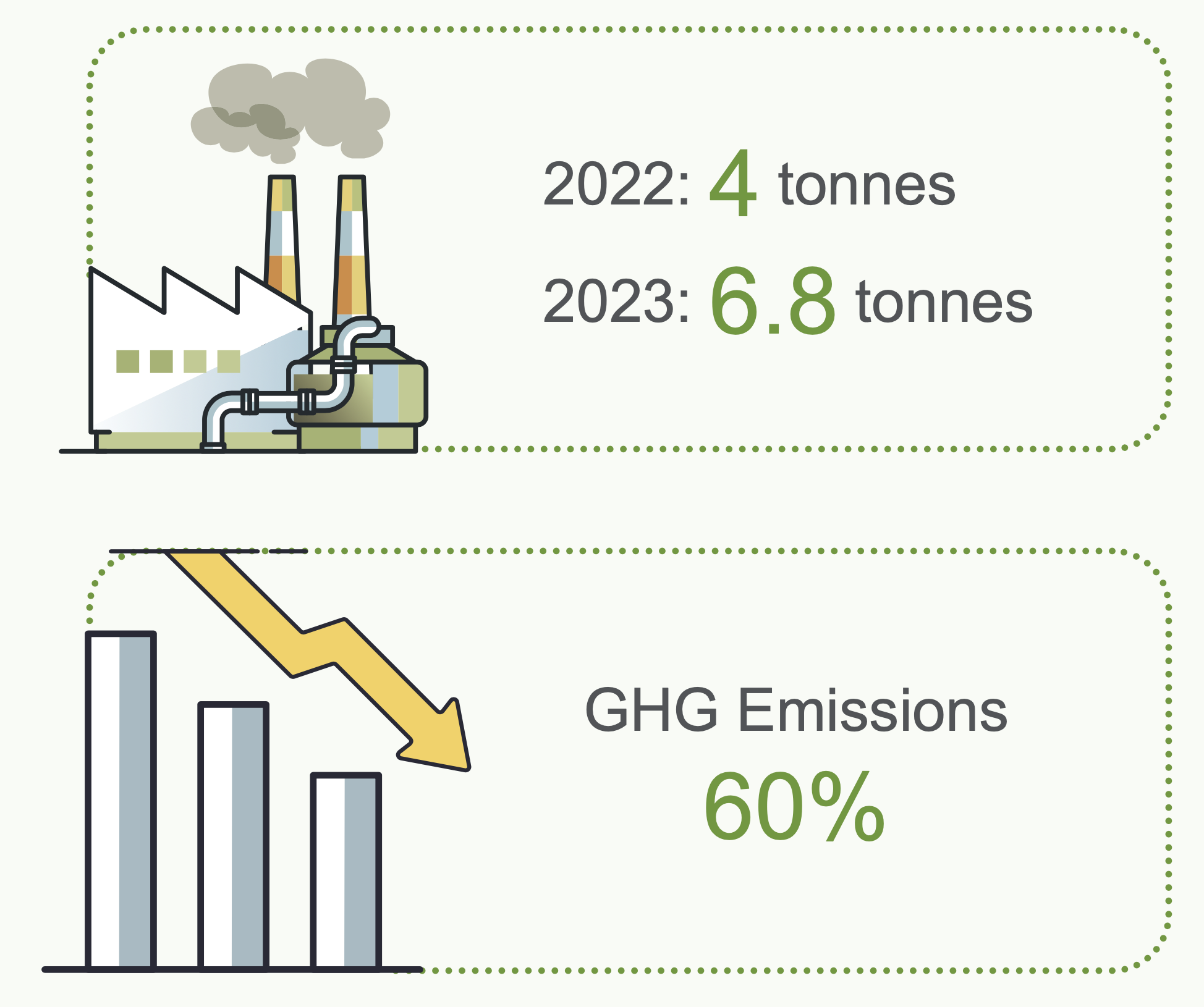
New Energy-saving Product - Nonlinear Power Amplifier
The current consumption or efficiency indicators of RF front-end module chips are closely related to investments in system-level thermal management. High-efficiency, energy- saving RF front-end chips have become key indicators for RF front-end chip design firms. Combining nonlinear RF front-end module chips with the main chip's digital pre- distortion (DPD) algorithm represents a low-power, high- efficiency product solution. It also serves as a product blueprint for domestic and international Wi-Fi 7 brand manufacturers aiming to enhance ESG quality. Based on product shipments in 2024, the market share of products using nonlinear power amplifiers is expected to reach 50%, saving 20.088 million kWh of electricity.
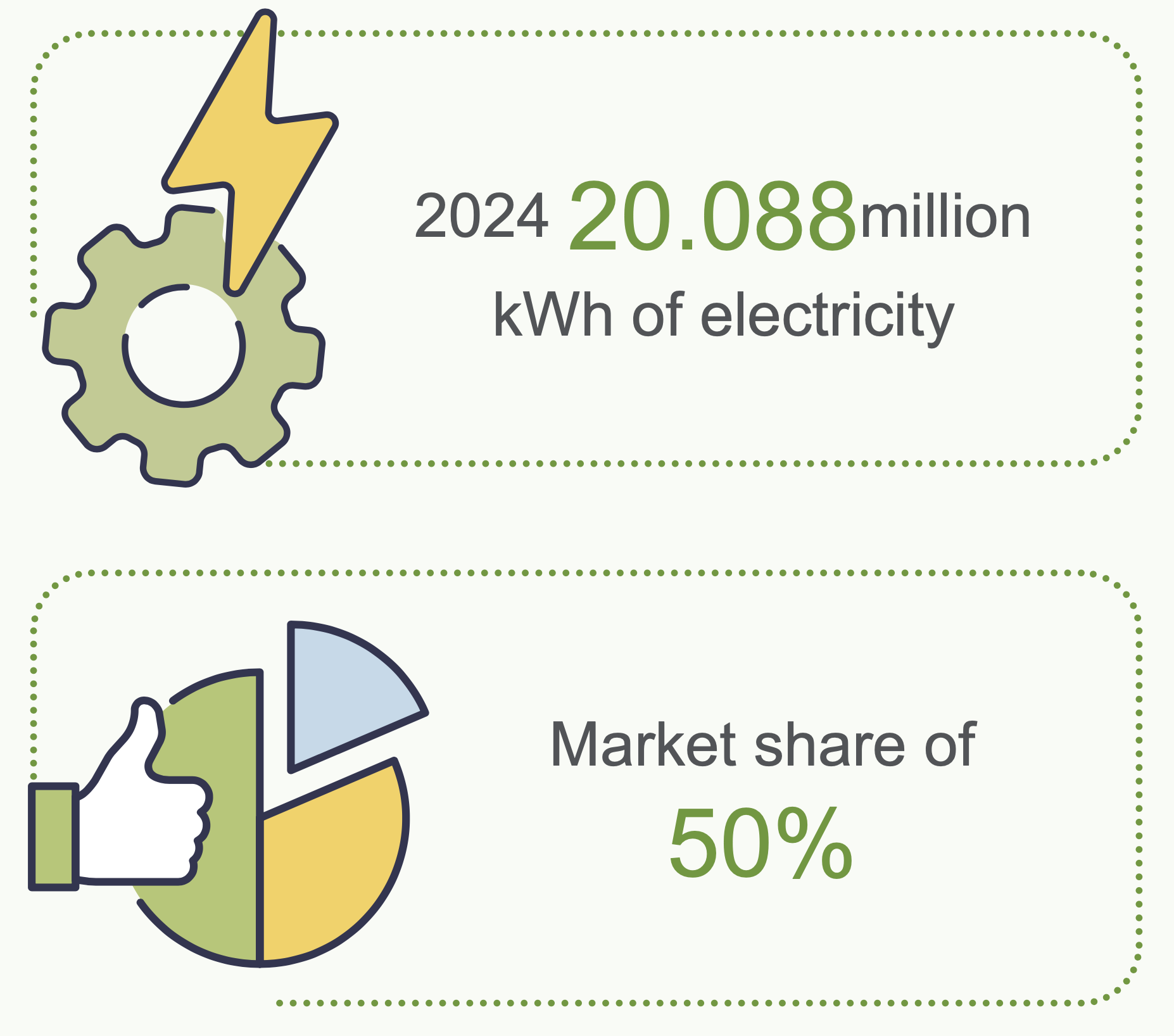
Mobile Communication Products
Mobile communication products boast extremely low power consumption when in special standby mode, which only consumes roughly 35%~85% power compared to the normal mode. In transmission mode, the efficiency mode of the mobile communication product offers a transmission power comparable to that of the normal mode but only consumes 35%~70% of power compared to the normal mode, hence it can extend battery life and minimize battery pollution.
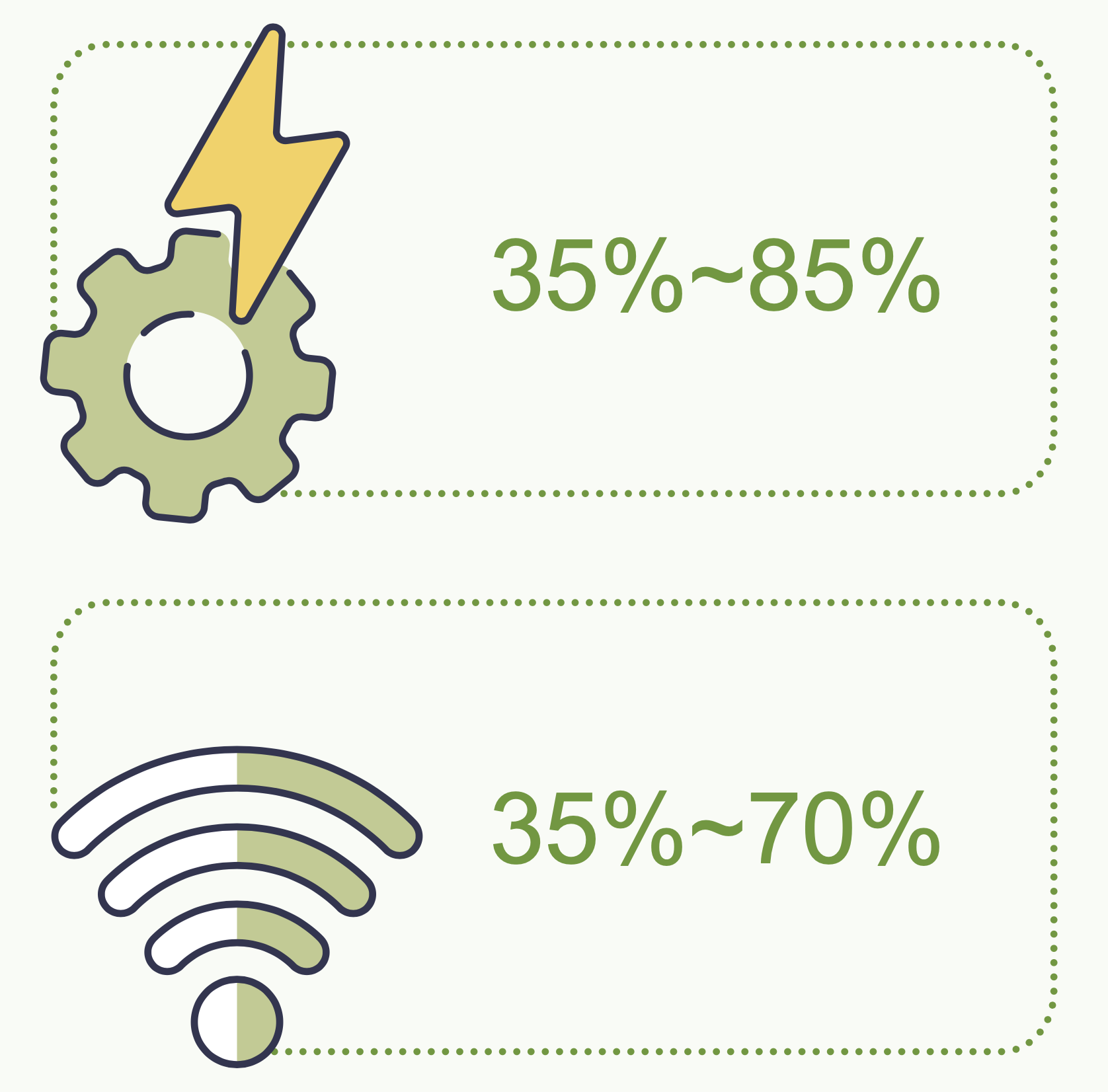
Tablet and Smartphone Products
Under the special standby mode coupled with the efficient transmission mode, tablet and smartphone products can achieve lower power consumption benefits. Relevant technologies were applied to tablet and smartphone products that were shipped to customers in 2023. If calculated based on 12 hours of standby mode and transmission mode, respectively in a day, roughly 39.09 million kWh of electricity can be saved. If calculated based on the electricity carbon emission factor announced by the Energy Administration, MOEA in 2023, the products can decrease CO2 emissions by about 19,310 tonnes.
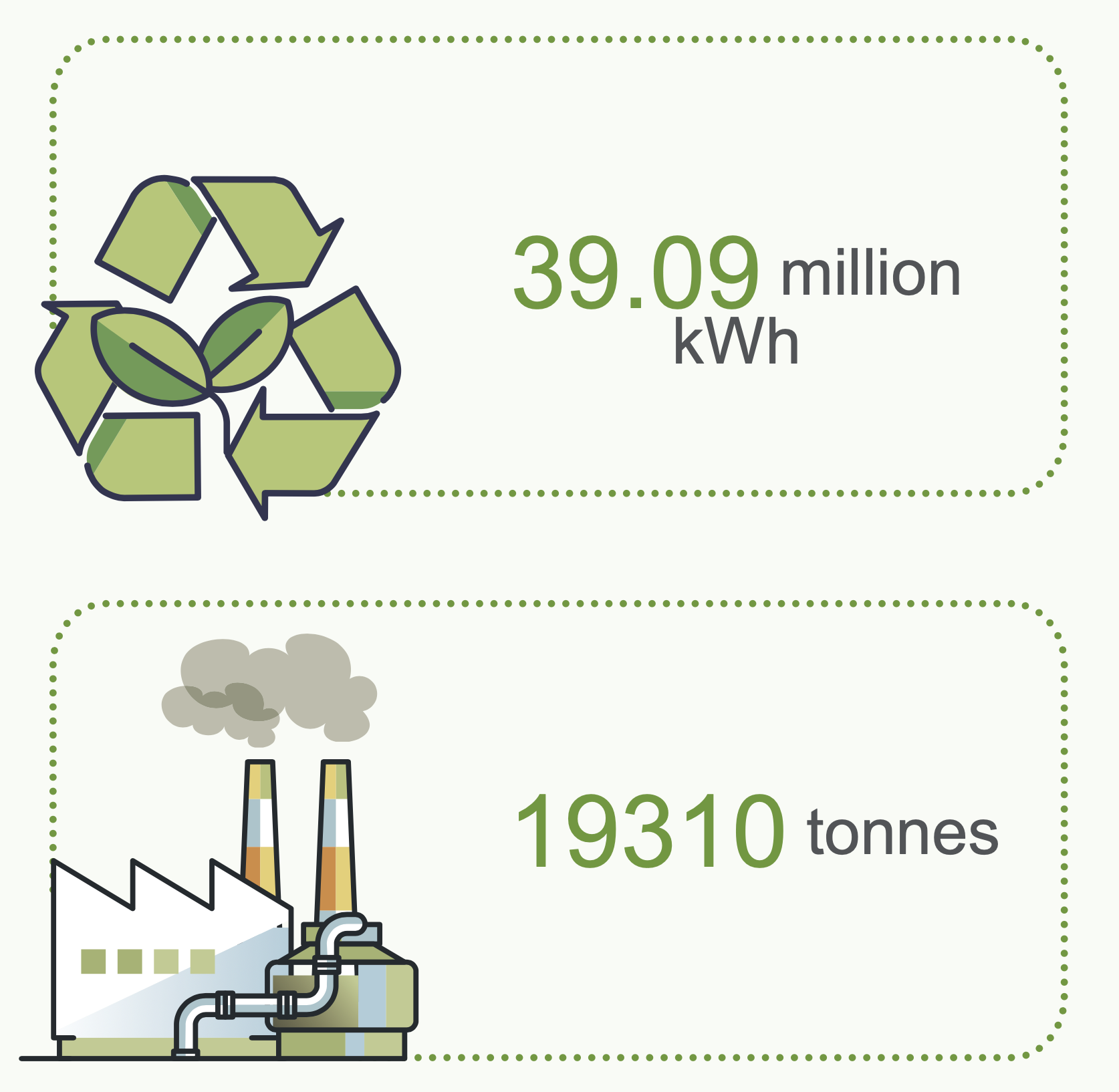
Microwave Radars with Integrated Signal Processing Sensor Products
Continue to reduce current consumption of our radar sensor products. The motion sensing of our 10GHz ultra-wideband (UWB) microwave radar with integrated signal processor was originally designed to operate with 150mA in 2021, but was reduced to 110mA in 2022. It was further decreased to 5mA in 2023, achieving a 95.5% reduction. The product's energy-saving benefits are widely applied to smart homes, smart lighting, surveillance systems, and dashcam products.

Energy Conservation and Carbon Reduction Applications of Microwave Radar with Integrated Signal Processing Sensor
- Lighting fixtures or lightbulbs equipped with the automatic sensing function of the radar sensor can turn off the lights automatically when the room is unoccupied.
- Air conditioners equipped with radar sensors can detect the room from different angles for human presence. If no human presence is detected, it will turn the fan speed to the minimum or automatically enter sleep mode, and the fan angle will be adjusted to ensure optimal comfort and cooling efficiency.
- Televisions equipped with the automatic sensing function of the radar sensor will turn off or enter sleep mode automatically to minimize energy consumption.
- Desktop or notebook computers equipped with radar sensors can turn off the screen and enter sleep mode when the user is away from the screen.
- Surveillance systems equipped with radar sensors can activate cameras to take photos/videos only when someone is detected to lower overall system energy consumption.
- Dashcams equipped with radar sensors can be used for anti-theft functions, which can detect abnormal movement before turning on the recording system to reduce battery consumption.
- RichWave's microwave radar sensor has been included in the Intel Integrated Sensor Hub (ISH) third-party supplier list.
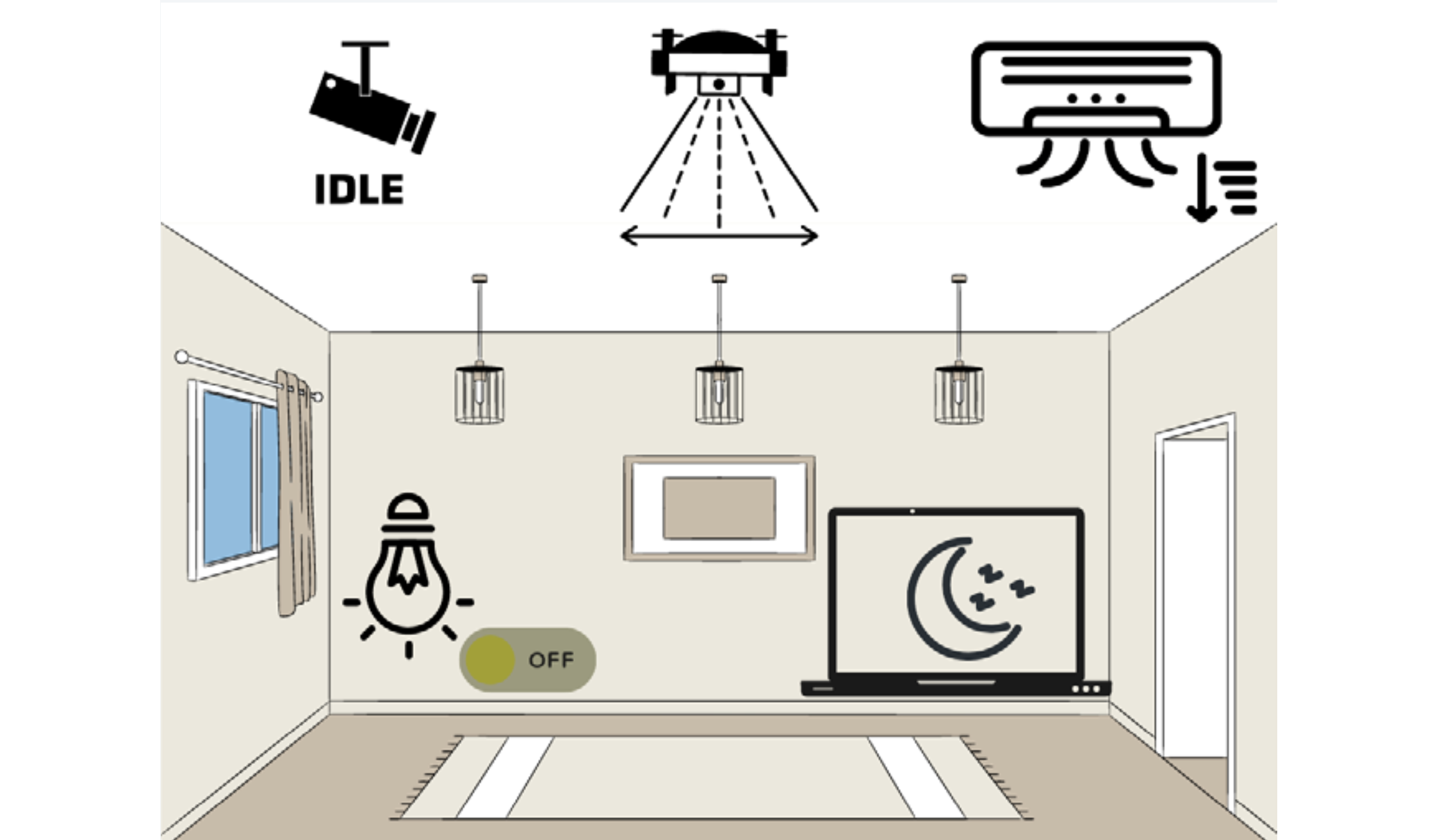
RichWave Masters Key Technologies, Increases Market Share and Garners International Recognition
RichWave is the only domestic RF front-end device supplier in the country that has successfully commercialized process technologies such as GaAs, SiGe, SOI, CMOS, and IPD. With the dedicated efforts of its professional R&D team, RichWave has steadily developed advanced RF device technologies and design capabilities, putting the company in a favorable position to embrace the challenges of the upcoming Wi-Fi 7 generation and aims to advance Taiwan's RF front-end device technology, aspiring to surpass major foreign manufacturers to become a leading global supplier. In terms of RFIC FEM products used for Wi-Fi applications, RichWave has shipped over 90 million chips on average every month in 2023, totaling more than 1.079 billion chips for the entire year, hence the global market share of RichWave WiFi products in 2023 is estimated to be about 20%.
Proactive Participate in Academic Seminars to Establish RichWave's Industry-leading Position
RichWave has been sponsoring the IEEE RFIC Symposium for 4 consecutive years since 2019, actively gaining publicity for the RichWave brand. Additionally, we also participate in TSIA's quarterly report presentations and the content production of NTU SoC Center's R&D quarterly report to disseminate RichWave's technological know-how through academic institution journals.
Patent Management
RichWave is eagerly promoting the smart intellectual property management project to reinforce the company's innovative ability and product competitiveness, as well as to protect our cutting-edge technological accomplishments. The company focuses on the strategic goals of "becoming the leader in the global RFIC market through the application of technology"and "market differentiation"to determine the number of patent applications and grants for the year, encouraging our R&D colleagues to achieve the target. RichWave has formulated the "patent management regulation"document to help our colleagues apply for patents systematically and keep the R&D outcome in the form of patents to safeguard the company's R&D achievements and patent rights. RichWave has established a Patent Review Committee headed by the President, in charge of reviewing patent applications' economic benefits, application countries, patent maintenance, as well as offering technical consultations and patent management policies, etc. To incentivize our colleagues to submit patent applications RichWave has set aside invention patent application bonus, invention patent grants bonus, utility model patent application bonus, design patent application bonus, and patent infringement reporting bonus to increase the company's patent quality and competitiveness.
Patent Target Achievement:
The company reports the number of patents and intellectual properties to the Board of Directors annually in Q4. The company reported to the board on February 29, 2024, that the number of target patent proposals for 2023 was 51, with a cumulative total of 54 proposals, achieving a completion rate of 105.8%. As of December 31, 2023, the company had filed 116 patent applications and was granted 102 patents, reaching a major milestone with a cumulative total of over 600 (622) global patents. RichWave was ranked among the top 100 in national patent applications and grants in 2023, maintaining a spot in the top 100 for 5 consecutive years.
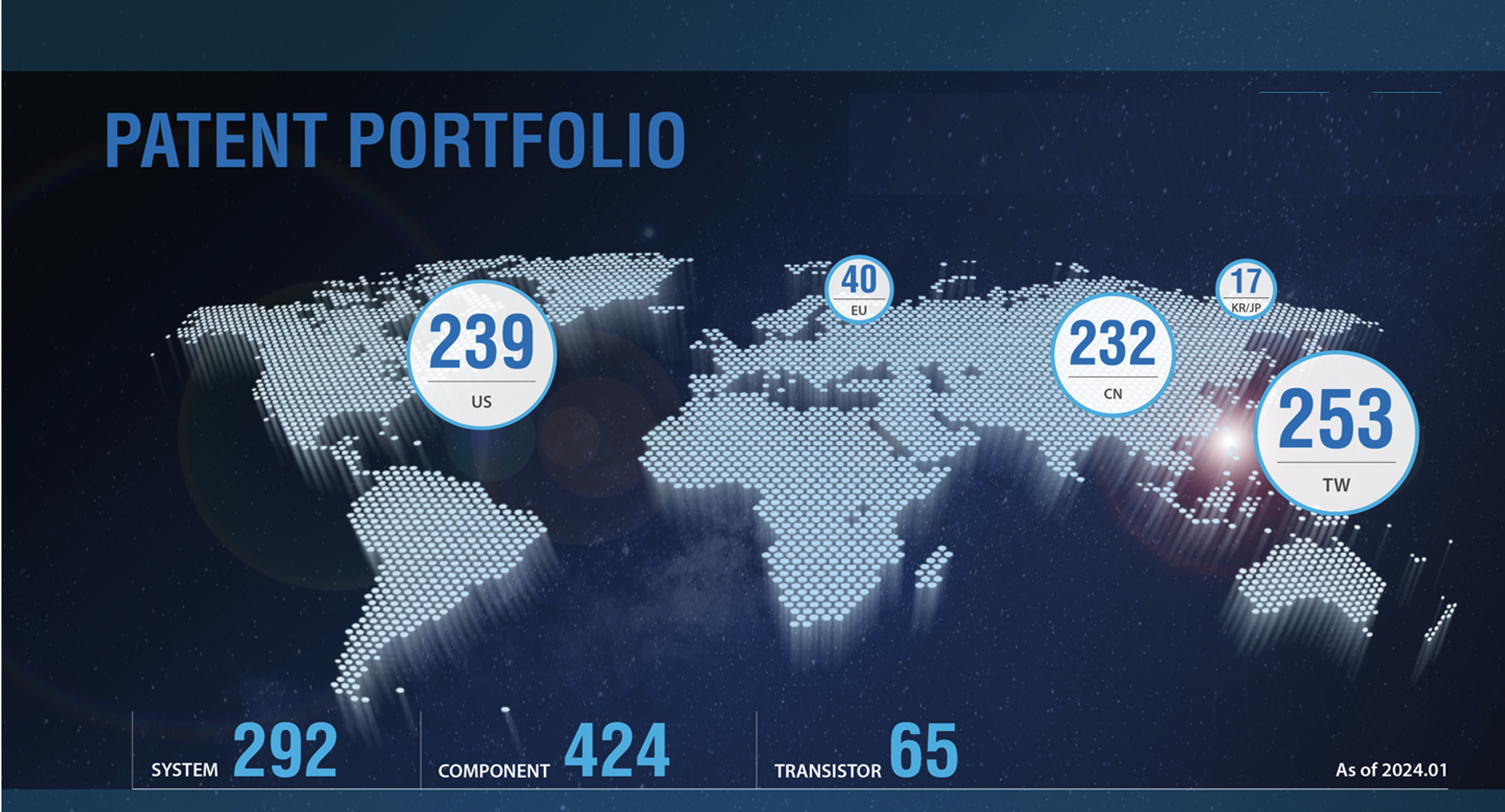
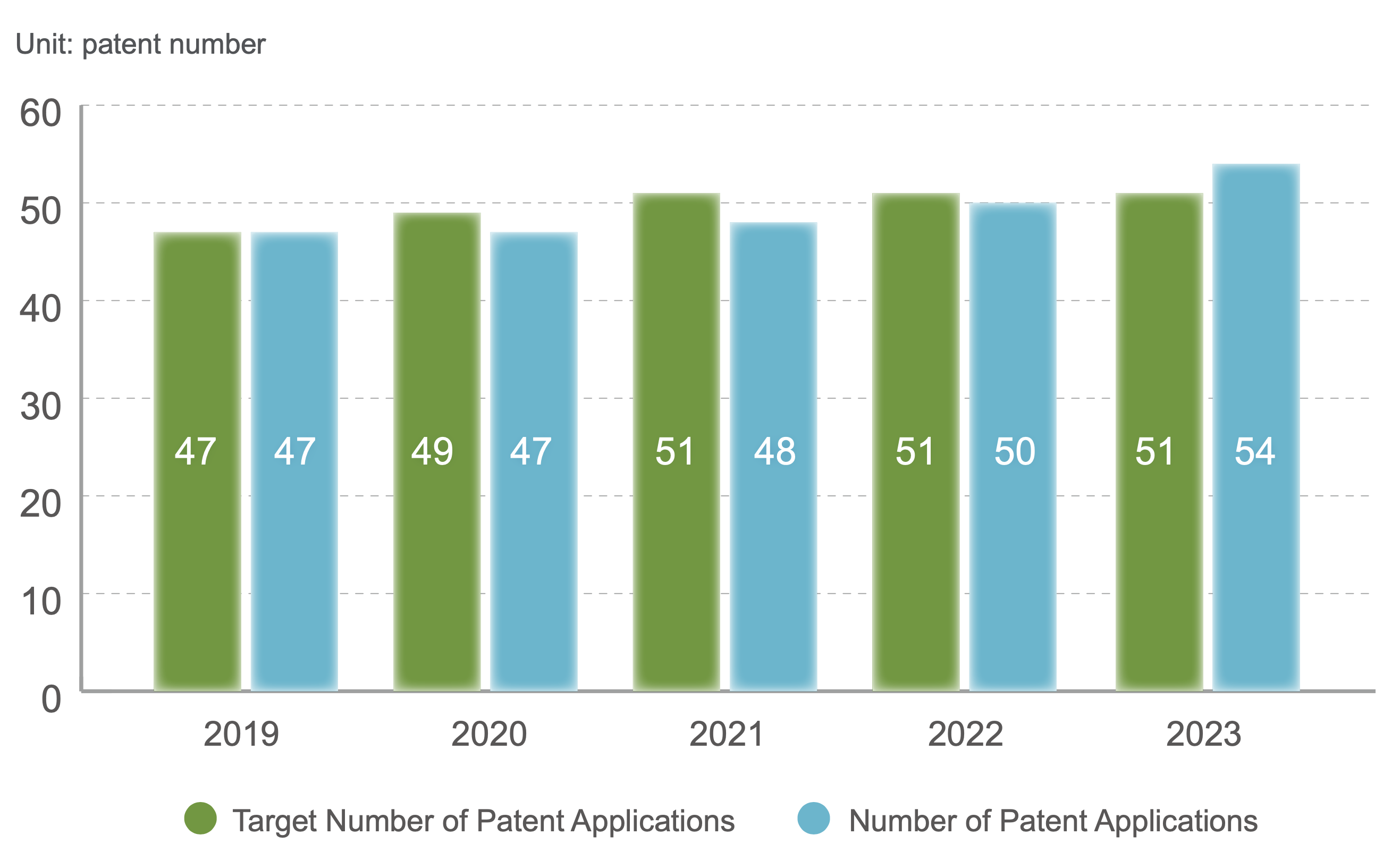
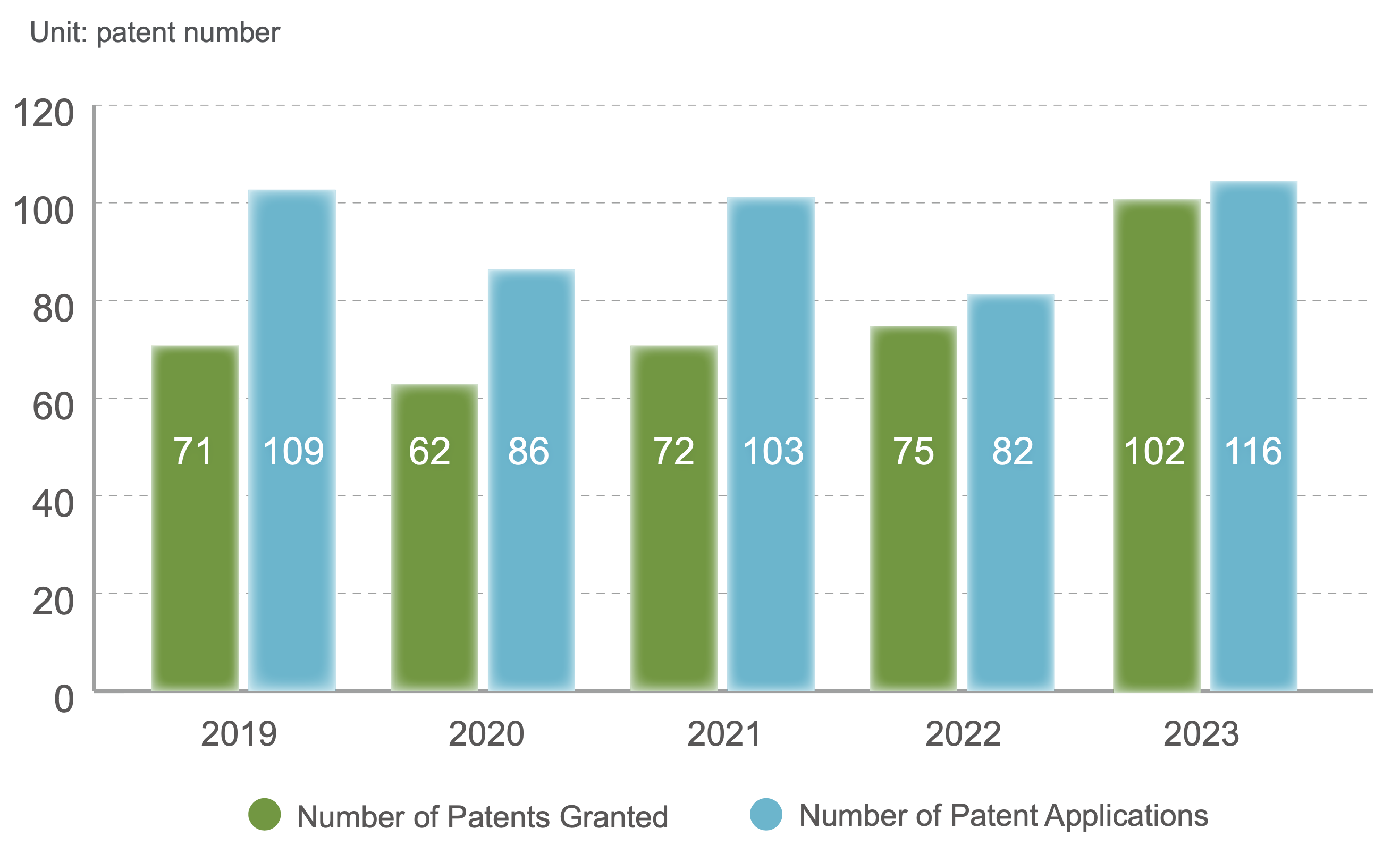
Representative patents in 2023: Power amplifier capable of maintaining constant gain regardless of temperature variations [US11569784B2]
The power amplifier includes a transistor, a temperature sensor, and a filter. The transistor is used to receive a bias signal and amplify the radio frequency (RF) signal. The temperature sensor is located near the transistor to detect its temperature and provide a voltage signal at the control node accordingly. The filter is coupled with the temperature sensor and is used to filter the voltage signal to generate a filtered voltage. The bias signal is adjusted according to the filtered voltage.
Since the Wi-Fi 7 communication standard demands greater transmission throughput (at least 30Gbps), the frequency of using long packets will be higher than in previous Wi-Fi technologies. If the thermal effects caused by long packets cannot be addressed, it will result in wasted energy consumption by the power amplifier and adversely affect transmission throughput. The thermal effects produced at high power levels may cause performance degradation of the power amplifier, leading to limited transmission distance.
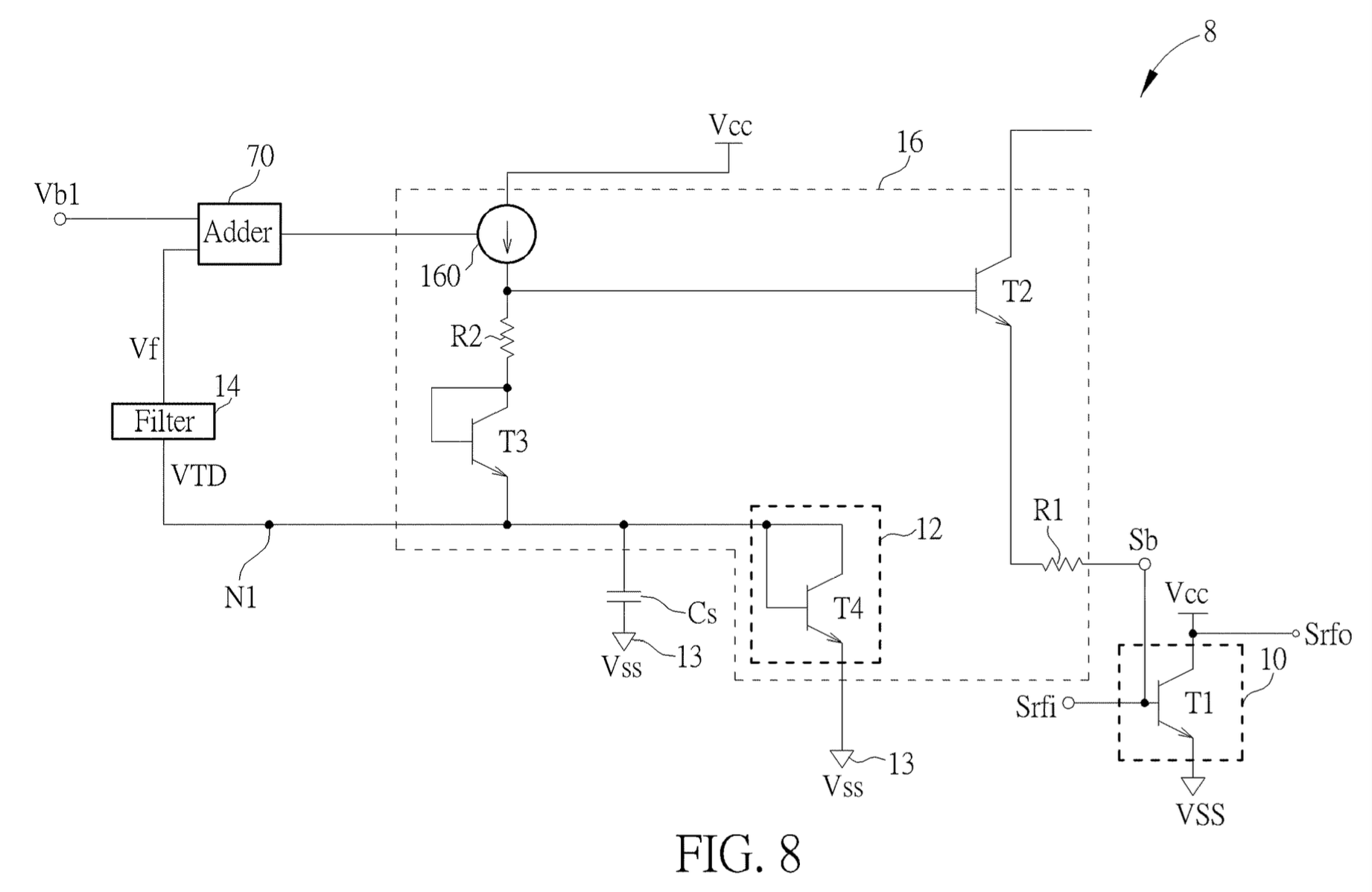
RichWave has developed adaptive bias circuits featuring an innovative circuit architecture to achieve various operating voltage settings and high-efficiency performance.
These circuits maintain stable high-speed transmission rates and throughput during MIMO operation, meeting EVM (≤ 45dB) requirements under high dynamic variations in packet length (100us to 4ms) and modulation waveforms such as MCS13 EHT160/EHT320. The company's Wi-Fi 7 RFIC has progressively obtained platform verifications by major network chip manufacturers.
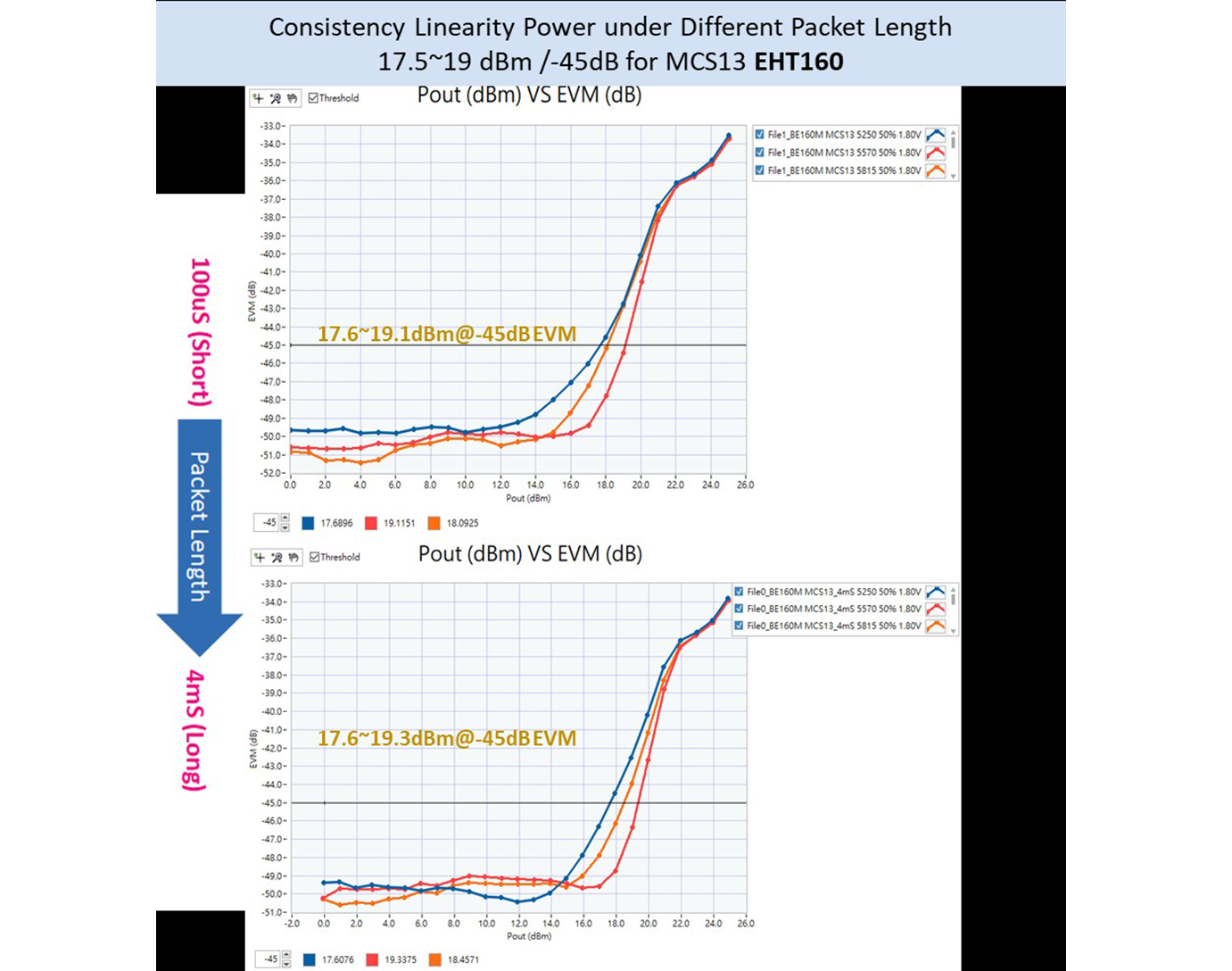
Representative new products in 2023: Next-generation Wi-Fi 7 nonlinear RF front-end module chip

[ Product introduction ]
RichWave's next-generation Wi-Fi 7 (IEEE 802.11be) nonlinear RF front-end module chip series includes a comprehensive range of high-power RF front-end modules, medium/high-power RF modules, and high- efficiency RF front-end modules to meet the diverse platform requirements of main chips in Taiwan and abroad.
In particular, the RTC66284 (2.4 GHz), RTC66583 (5 GHz), and RTC66937 (6 GHz) nonlinear RF front-end module series feature a QFN 3mmx3mm package design. They integrate high-efficiency power amplifiers, power detectors, low noise amplifiers with bypass mode, and single-pole double-throw (SPDT) transmit/ receive (T/R) switches for comprehensive functionality. Currently, we are undergoing digital pre-distortion (DPD) algorithm verification with various main chipset platforms.
RichWave's next-generation Wi-Fi 7 non-linear RF front-end module series utilizes nonlinear technology to achieve optimal power amplifier conversion efficiency. Coupled with DPD algorithms on various main chipset platforms, it maintains linearity while reducing power consumption by 20~30%. For WiFi 7, achieving high throughput and simultaneous tri-band transmission while keeping system power consumption and heat generation comparable to or lower than WiFi 6 is important for materializing green energy and carbon reduction benefits.
RichWave's Wi-Fi 7 nonlinear RF front-end module not only decreases power consumption but also features a low EVM noise floor design for both long and short packets. It achieves an extremely low MCS13 EVM noise floor of less than -50dB and less than 0.1dB AM-AM distortion. When coupled with 4096QAM signal modulation and DPD algorithm, it can provide the high throughput performance required of Wi-Fi 7. The exceptional performance with a noise figure (NF) of less than 2dB enhances sensitivity requirements for end customers, supporting high-speed MCS13 at close range and low-speed MCS0 at long distances.
[ Product applications ]
Wi-Fi 7 system: Achieve the greatest energy-saving benefits for wireless APs, router, and gateways.




